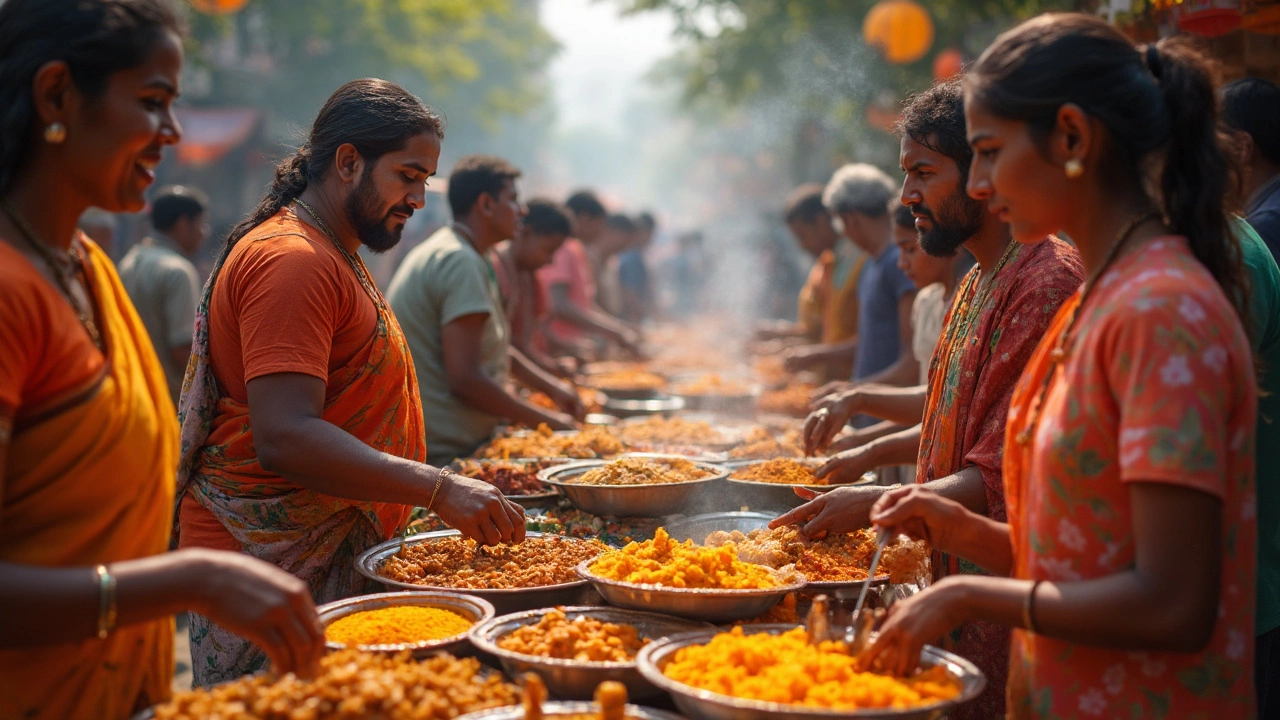Hands in Indian Cooking
When talking about Hands, the primary tool chefs use to feel, shape, and perfect Indian dishes. Also known as chef's hands, they provide the tactile feedback that separates a good dish from a great one. hands in Indian cooking let you judge dough elasticity, control heat, and balance flavors without a thermometer. Below we’ll see how these simple tools connect to everyday staples.
Roti: The Hand‑Puffing Secret
One of the most telling examples of hand power is Roti, a thin, unleavened flatbread that puffs when the dough is just right. The process starts with a firm but pliable dough—your hands knead the flour, water, and oil until the gluten aligns. When you roll the dough, the pressure from your palms determines thickness; too thin and it tears, too thick and it won’t puff. While cooking, a quick, confident flip using the fingertips creates that classic balloon effect. In short, hands enable proper roti puffing, turning a simple mixture into a fluffy staple.
Dosa: Spreading and Flipping With Confidence
The art of Dosa, a crisp, fermented rice‑lentil crepe that requires precise spreading showcases how hands influence batter handling. After the batter ferments, you pour a ladle onto a hot pan and use the back of the hand—or a flat spatula—to spread it outward in a thin circle. The speed and angle of your hand motion control the crust’s crispness and the center’s softness. When it’s time to flip, a quick wrist flick and a gentle lift keep the dosa intact. This shows that hands influence dosa batter spreading, delivering the perfect crunch‑soft balance every time.
Biryani: Layering and Marinade Mastery
Even a grand dish like Biryani, a fragrant rice and meat or vegetable casserole known for layered flavors relies on hand work. After marinating the meat or vegetables, you use your fingers to massage the spices into every piece, ensuring the flavor penetrates fully. When assembling, you gently fold the partially cooked rice over the meat, using your hand to distribute saffron, fried onions, and herbs evenly. The final “dum” cooking stage often involves sealing the pot with dough—your hands shape that dough tightly to trap steam. Here, hands shape biryani layers, guaranteeing each bite carries the intended aroma and texture.
Chutney: Grinding, Tasting, and Adjusting
Fresh Chutney, a condiment made by grinding herbs, spices, and fruit or veg is another place where touch matters. Before grinding, you often crush dry spices with your palm to release oils. While the mortar whirls, you use the back of the hand to tilt and scrape, feeling the texture change from gritty to smooth. A quick taste—directly from the spoon—lets you adjust salt, sugar, or acidity on the fly, guided by the immediate feedback from your mouth and the feel of the mixture. This illustrates that hands determine chutney texture, turning a raw blend into a balanced accompaniment.
All these examples show how a simple pair of hands ties together technique, flavor, and tradition across Indian cooking. Below you’ll find a curated list of articles that dive deeper into each of these dishes, offering step‑by‑step tips, troubleshooting tricks, and science‑backed explanations to help you master the hands‑on craft of Indian cuisine.

Why Indian Street Food is Served by Hand
Indian street food isn't just about flavors; it's also about the way it's served – using hands. This method isn't just convenience but is deeply rooted in tradition and practicality. In India, eating with hands is culturally significant and enhances the sensory food experience. This approach also helps in measuring the right temperatures and portion sizes when serving food. Discover why Indian street food vendors prefer this method and how it adds to the authenticity of the culinary experience.